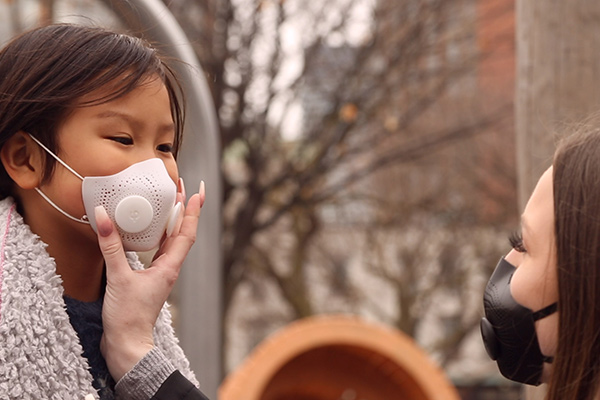
Many plastics companies leapt into action when the coronavirus pandemic struck, converting manufacturing capacity to enable the production of all types of personal protective equipment (PPE) –– from face shields and goggles to ventilator parts and virus test kits. Designers and students alike put current projects aside to focus on creating innovative new solutions to many PPE-related challenges.
One effort in particular caught my attention, given how it reflected not just an immediate response to the vital need for face masks, but also offers a glimpse into the future of digital design and product manufacture in the coming age of mass customization.
LuxMea Studio LLC, an eight-person team of designers and architects with offices in Cambridge, Massachusetts, and Toronto, Ontario, leveraged its knowledge of artificial intelligence (AI), generative design, and digital fabrication to devise a way to remotely measure and quickly produce customized, reusable masks that are designed to perfectly fit the face of each individual.
The resulting, stylish Nuo 3D mask uses four different washable, HEPA-grade filters made from polypropylene. Nonwoven, spunbond filters form the inner and outer-most layers, and serve as a barrier to hold in place the two internal, meltblown-nonwoven filters that provide the filtration. These charged, meltblown PP inner layers offer filtration efficiency of more than 95 percent for particles at 0.3 microns –– meeting the standard of the N95 masks so in demand now by medical professionals and first responders. LuxMea recommends reusing filters for up to five days before disposing of them, depending on the environmental conditions.
Combining AI & 3D printing
The Nuo 3D mask “is a pop-up product of our PPCPTM (Personal Profile + Customized Product) project,” explained LuxMea founder Jean Yang in a recent email interview. “The PPCP is basically an eco-system of AI-powered computational design and digital fabrication for highly customized, automated, sustainable and affordable wearable products.” Her team had just finished developing shoe and eyeglass prototypes in late January when the pandemic became a global concern, prompting Yang and her colleagues to launch a mask product.
She said that for the past two years her team has been working with doctors from Massachusetts General Hospital on 3D-printed, mass-customizable medical equipment. As part of that effort, they did extensive research into suitable materials –– ranging from biocompatible to biodegradable. They found that nylon 12 (also known as PA12) offers a combination of durability, flexibility, material strength and design flexibility, making it ideal for the mask project.
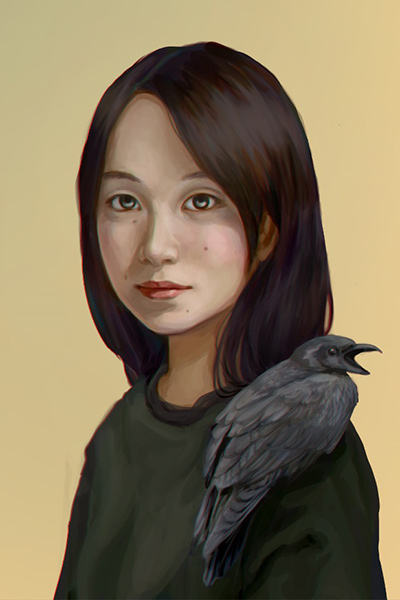
LuxMea also began working in 2015 with Shapeways, a Netherlands-founded, New York-based 3D printing marketplace and service company. Users design and upload 3D printable files, and Shapeways prints the objects for them or others. For this mask project, Shapeways sources the powder to 3D print the inner and outer layers of the structural shell. It uses powder bed fusion technology to make white masks on EOS P770 machines, and black masks on HP Multi Jet Fusion 5200 machines.
Using a Selective Laser Sintering process, the EOS machines employ a laser to fuse the powder together, whereas the HP process uses a fusing agent to bind the powder. “The white color is only offered through the EOS machine,” Yang said, adding, “we like the texture from the black color from HP Multi Jet Fusion machines.”
While LuxMea currently offers masks only in black or white, Yang says, “It is our intention to provide more customization options for people who want a more personal touch.”
She notes that the PA12 powder in the print bed is 50-85 percent recyclable and reusable , which makes it an efficient technology. “The printed nylon is technically recyclable, with the increasing demand of 3D printing, we may find a solution to fully recycle the nylon prints.”
Tapping into generative design
Yang explained how LuxMea began its generative design approach two years ago with its residency program with Autodesk Tech Centre, using that firm’s Fusion 360 Ultimate software platform.
(Generative design is a design exploration process, Autodesk notes. Designers or engineers input design goals into the generative design software, along with parameters such as performance or spatial requirements, materials, manufacturing methods, and cost constraints. The software explores all the possible permutations of a solution, quickly generating design alternatives. It tests and learns from each iteration what works and what doesn’t.)
As for obtaining someone’s facial parameters, there are basically two ways to do the face measuring, Yang explained:
1) Use your phone or a scanner to scan your face, and send in your face model in an .stl or .obj format.
2) Use LuxMea also offers this simplified measurement instruction online since many customers may not be able to easily access the necessary 3D scanning technology.
Regardless of the method used, the resulting measurements then are used to generate a bespoke mask, designed specifically for your face. The four key measurement are face width, lower face height, nose height and nose width.
“We keep the measurement instruction as user-friendly as possible and let the AI and software do the heavy lifting to figure out the optimized design based on the measurement provided,” Yang added. “Once the depth sensor becomes a standard for all the cellphones, we will release an app to track the facial scan for this process.”
LuxMea also is developing further customization options. One currently can choose to add up to 12 letters of all-caps text to the front of the mask, with plans calling for the ability to add a logo or image.
LuxMea offers mask versions with or without valves. The current four-piece, standard valves are injection molded from food-grade polypropylene. Each valve also has a small disc-like component that is made of rubber.
Those masks fitted with two respirator valves may be slightly more comfortable because they help to dissipate the heat better. They also disperse the CO2 better. But masks without valves actually do a slightly better job of filtering the particles that the mask wearer is breathing out (since none of the exhausted air is being expelled through the valves).
“I’ve used both,” Yang said, “and I think the difference is minor.”
She noted that her team also is developing prototype “artistic valves” with cool designs or symbols to offer additional personalization. These customized valves will be 3D printed from nylon or other resins.
A crowdfunding hit
LuxMea launched a Kickstarter campaign with the aim to raise up to $10,000 from supporters. It closed the campaign on May 14, with 700 backers pledging $118,647 –– far exceeding Yang’s wildest hopes.
“We believe Kickstarter is a great platform and community to validate innovative ideas like our mask project, and the result seems to say so.” From May 14 on, the campaign has moved to the Indiegogo platform, from where interested parties can now pledge or order their masks (starting at the discounted price of $99).
Given the project’s popularity, how well positioned is LuxMea to handle strong demand from the public?
“Shapeways is one of the largest 3D printing manufacturers, and prints millions of parts every year.” Yang noted. “The production capacity is certainly scalable to us, for masks, it is safe to say we can scale to around 50,000 masks per month.”
LuxMea till recently had largely focused on buildings and architecture. In fact, LuxMea has developed what it calls a “super-composite” material –– a proprietary, large-scale, 3D-printed building material that has passed the ASTM-E84 flame spread test. “Soon we will be doing 3D printed buildings,” she declares.
Offering much credit to the Autodesk Tech Centre –– “we could not have done this without them” –– Yang recounted the philosophy driving her firm’s view of the future.
“To us, both building solutions and personalized products serve the same purpose. We envisioned the Age of Mass CustomizationTM back in 2016, and through a series of projects, we integrated the workflow of computational design and digital fabrication.
“In the future, we envision a bespoke revolution where products can be fully customized to the point where things –– personal items and habitat –– can become an extension of yourself through both form and function. Technology, AI, and digital fabrication methods like 3D printing can get us to this future because they offer a unique opportunity for customization at an affordable price with high precision and fast speed.”
LuxMea Studio: www.luxmea.co
The views, opinions and technical analyses presented here are those of the author or advertiser, and are not necessarily those of ULProspector.com or UL Solutions. The appearance of this content in the UL Prospector Knowledge Center does not constitute an endorsement by UL Solutions or its affiliates.
All content is subject to copyright and may not be reproduced without prior authorization from UL Solutions or the content author.
The content has been made available for informational and educational purposes only. While the editors of this site may verify the accuracy of its content from time to time, we assume no responsibility for errors made by the author, editorial staff or any other contributor.
UL Solutions does not make any representations or warranties with respect to the accuracy, applicability, fitness or completeness of the content. UL Solutions does not warrant the performance, effectiveness or applicability of sites listed or linked to in any content.



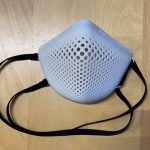
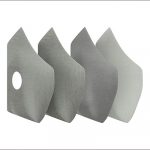
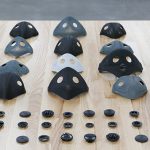
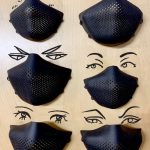
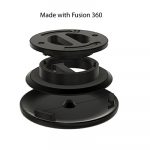
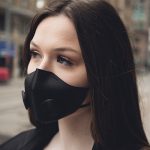
Hi Bob Grace, yet another fantastic value based article based on research, and I think all the tips are the result of learning through experience, that’s why they are so much valuable for the readers.
Thank you for this information Bob. Custom face masks are safe which allows for completely custom prints as well as the utility of a standard face cover.